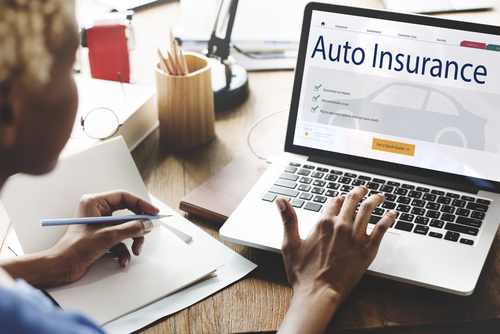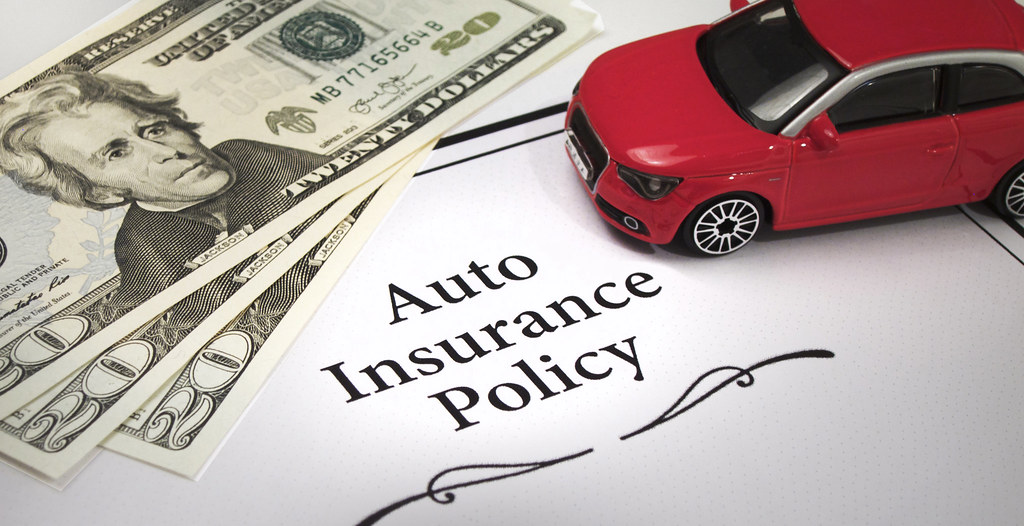If you own or drive a car, auto insurance isn’t just a good idea—it’s often the law. But more importantly, it’s a financial shield that protects you from massive costs that can arise from car accidents, theft, natural disasters, or even lawsuits. While many see auto insurance as a monthly expense, few understand how much value and protection it offers when disaster strikes.
In this comprehensive guide, we will explain what auto insurance is, how it works, the types of coverage available, and why it’s essential—not just legally, but financially and practically.
Whether you’re a new driver, switching providers, or just trying to understand your current policy, this article will walk you through everything you need to know.
Key Takeaways
- Auto insurance protects you financially from damages, injuries, and liability related to driving.
- It is mandatory in most regions to have at least minimum liability coverage.
- Policies include several coverage types—liability, collision, comprehensive, and more—each serving different purposes.
- Premiums are influenced by many factors: driving history, vehicle type, location, age, and coverage levels.
- Higher deductibles can lower premiums but mean higher out-of-pocket costs after an accident.
- Technology is transforming the industry through telematics, AI, and usage-based insurance models.
- Regularly reviewing and updating your policy ensures you have the right coverage as your life and vehicle needs change.
- Knowing how the claims process works and your legal responsibilities helps avoid surprises after an accident.
- Auto insurance is an evolving industry responding to changes in vehicle technology, regulation, and consumer behavior.
What Is Auto Insurance?
Auto insurance is a contract between you and an insurance company. In exchange for a premium (a monthly or annual fee), the insurer agrees to cover some or all costs associated with:
- Vehicle damage
- Property damage
- Medical expenses
- Legal liability from accidents
Depending on your policy, this can include repairs, medical bills, legal fees, rental cars, and more.
The Purpose of Auto Insurance
Auto insurance serves two main purposes:
- Financial Protection – It helps pay for expensive damages or injuries caused by accidents, theft, or disasters.
- Legal Compliance – In most regions, driving without insurance is illegal and punishable by fines, license suspension, or jail.
A Brief History of Auto Insurance
Auto insurance, like the automobile itself, has undergone dramatic evolution over the last century. What began as a simple agreement between individuals and insurers has become a global, trillion-dollar industry involving complex risk models, state regulations, digital platforms, and advanced telematics. To understand why and how auto insurance exists in its current form, it’s helpful to examine its historical development.
The Early Days of Driving and Risk
The Birth of the Automobile
The late 19th century saw the invention of the automobile. Karl Benz is credited with building the first gas-powered vehicle in 1885 in Germany. As cars began appearing on roads, so did the inevitable accidents—pedestrian injuries, collisions with horses, and property damage.
The First Auto Insurance Policy
In 1897, a man named Gilbert J. Loomis of Dayton, Ohio, purchased the first auto insurance policy from Travelers Insurance Company. His policy protected him against liability if his car injured or killed someone or damaged property. It did not cover damage to his own vehicle.
This was revolutionary at the time, as it introduced the concept of spreading the financial risk of operating a vehicle across a broader group.
Auto Insurance in the Early 20th Century
As automobiles became more popular and affordable (thanks in part to Henry Ford’s Model T in 1908), roads became more crowded—and more dangerous. The number of auto-related injuries and fatalities rose sharply. As a result, governments and insurers began to see the need for formal regulation and mandatory coverage.
Rise in Traffic Accidents
- By 1920, the U.S. had over 8 million registered vehicles.
- Fatal crashes were becoming common in urban areas with little road regulation.
State-Driven Legislation Begins
- In 1927, Massachusetts became the first U.S. state to require auto insurance by law for drivers.
- This mandate covered liability insurance only—drivers had to prove financial responsibility in case they injured others.
The Birth of the Automobile and Its Impact
The first practical gasoline-powered vehicle was invented by Karl Benz in 1885. Soon after, innovators across Europe and America began building their own motor vehicles. Early cars were luxury items, expensive and rare, but they quickly captured public imagination and changed how people thought about travel.
Yet, unlike horse-drawn carriages or trains, early automobiles traveled at higher speeds and on roads not designed for motor vehicles. This new technology introduced unique hazards:
- Unpredictable Behavior: Drivers were learning how to control vehicles that could move faster and more erratically than horses or carts.
- Lack of Road Infrastructure: Roads were rough, often unpaved, narrow, and shared with pedestrians, horses, and cyclists.
- No Traffic Laws: Early traffic regulations were minimal or nonexistent. Rules such as speed limits, right-of-way, and signaling were yet to be standardized.
- Limited Safety Features: Cars had no seat belts, airbags, or crash-tested structures, making accidents often deadly.
Early Risks and Accidents
With growing numbers of cars on public roads, accidents began occurring with greater frequency:
- Collisions with Pedestrians and Animals: Streets were shared spaces. Pedestrians often walked along or crossed roads, unaware of the speed or unpredictability of vehicles. Animals like horses could panic at the sight of cars, leading to dangerous incidents.
- Mechanical Failures: Early automobiles were mechanically complex and prone to breakdowns, causing accidents. Brake failures, tire blowouts, and engine problems were common.
- Driver Inexperience: Because cars were new, many drivers lacked formal training or licensing. The lack of standard rules meant drivers used varying and sometimes reckless practices.
Despite these risks, there was no formal system to manage liability or compensate victims of accidents. If someone was injured or property was damaged, the injured party often had to sue the driver personally. This led to inconsistent and sometimes unfair outcomes.
The Need for Financial Protection

Early motorists soon realized the financial dangers involved. Accidents could result in expensive medical bills, property damage, and lawsuits. A single claim could bankrupt an individual.
In the absence of formal insurance, some drivers resorted to self-insuring—setting aside personal funds to cover potential damages—or entered into informal agreements to share risks.
This environment created a clear need for structured financial protection mechanisms that could spread risk across many people, rather than burdening individuals.
The First Steps Toward Auto Insurance
Recognizing this need, insurance companies began experimenting with policies specifically designed for automobiles:
- 1897: The Travelers Insurance Company issued the first known automobile insurance policy in the U.S. to Gilbert J. Loomis, covering liability for injury or damage to others.
- These early policies were limited in scope, often only covering third-party liability, and were priced very high due to the novelty and perceived risk.
Over time, as cars became more common and roads improved, insurers expanded their offerings to include coverage for damage to the vehicle itself, theft, and other risks.
Early Legal Framework and Road Safety Efforts
During these formative years, governments began to recognize the dangers posed by motor vehicles and started implementing basic regulations:
- The first traffic laws appeared in the early 1900s, such as speed limits (often as low as 10 mph), rules for signaling, and driver licensing in some cities.
- Municipalities started investing in road improvements to better accommodate automobiles.
- Early efforts at vehicle registration and driver licensing aimed to create accountability.
However, these laws were often patchy, uncoordinated, and poorly enforced, which meant accidents and liability disputes remained common.
Global Development of Auto Insurance
Europe
- European countries like the UK, Germany, and France quickly adopted similar principles.
- The Road Traffic Act of 1930 in the UK made third-party liability insurance mandatory for motorists. This ensured victims of motor vehicle accidents were compensated even if the at-fault driver could not pay.
Asia
- In countries like Japan and India, auto insurance began developing in the mid-20th century, closely tied to economic development and vehicle production.
- Japan implemented its Compulsory Automobile Liability Insurance (CALI) system in 1955, making it mandatory for all vehicle owners.
Post-War Boom and Industry Expansion
After World War II, car ownership skyrocketed globally:
- More people could afford cars.
- Suburbanization in the U.S. created dependence on personal vehicles.
- As the number of vehicles increased, so did demand for insurance products.
Insurance companies expanded rapidly and began offering broader coverage, including:
- Collision and comprehensive coverage
- Personal injury protection
- Uninsured motorist protection
Technology and data collection improved underwriting practices, allowing insurers to assess risk more accurately based on driving history, age, vehicle type, and location.
The Rise of Regulation and Consumer Protection
During this period, government agencies and consumer advocacy groups pushed for greater transparency, fairness, and accountability in the insurance industry.
Key Developments:
- Fair Credit Reporting Act (1970) – Regulated how insurers could use credit data.
- No-Fault Insurance Laws – Introduced in several U.S. states, these required insurers to pay out claims regardless of fault, aiming to reduce lawsuits and streamline claim processing.
- State Insurance Departments – Became more involved in regulating pricing and coverage requirements.
The Digital Age and Innovation
The 21st century brought massive technological changes that transformed the auto insurance landscape:
Online Quotes and Purchasing
Consumers could now compare and purchase insurance policies online in minutes.
Usage-Based Insurance (UBI)
Telematics devices and smartphone apps enabled pay-as-you-drive models, where insurance premiums are based on actual driving behavior (speed, braking, mileage, etc.).
AI and Big Data
Insurance companies now use machine learning algorithms to assess risk, detect fraud, and personalize policies.
On-Demand and Temporary Insurance
Companies began offering short-term coverage for rental cars, rideshare driving, or specific periods.
Electric and Autonomous Vehicles
The rise of EVs and self-driving technology presents new challenges and opportunities for insurers:
- Who is liable in a self-driving crash?
- How to insure autonomous systems and over-the-air software?
The Future of Auto Insurance
As mobility evolves, so will auto insurance. Future trends include:
- Increased automation in claims handling
- Blockchain for secure record-keeping
- Integrated insurance with vehicle manufacturers (e.g., Tesla offering in-house insurance)
- Insurance models shifting from personal ownership to mobility-as-a-service (ridesharing, car subscriptions)
Key Components of an Auto Insurance Policy

To understand your coverage, you need to know the building blocks of a policy.
Premium
The amount you pay (monthly, quarterly, or yearly) to keep your policy active.
Deductible
The amount you pay out-of-pocket before the insurer starts paying. Higher deductibles = lower premiums.
Coverage Limits
The maximum amount your insurer will pay per incident or policy period.
Policy Term
The duration of your insurance agreement (typically 6 or 12 months).
Declarations Page
An overview of your policy, including personal info, vehicle details, coverage types, and limits.
Types of Auto Insurance Coverage
There are multiple types of coverage, and each serves a unique purpose.
Liability Insurance
Covers bodily injury and property damage to others if you’re at fault. Legally required in most places.
Collision Coverage
Pays for damage to your vehicle if you collide with another car or object.
Comprehensive Coverage
Covers non-collision-related incidents like theft, vandalism, natural disasters, or hitting an animal.
Personal Injury Protection (PIP)
Covers medical expenses for you and your passengers, regardless of who’s at fault.
Uninsured/Underinsured Motorist Coverage
Protects you if you’re hit by a driver with little or no insurance.
Gap Insurance
Covers the difference between what your car is worth and what you still owe on your auto loan if it’s totaled.
Why You Need Auto Insurance
Let’s break it down into three major reasons:
Legal Requirement
In almost every state or country, minimum liability insurance is mandatory to drive legally.
Financial Protection
Accidents can cost tens of thousands of dollars. Without insurance, you may be personally responsible for:
- Repairs to your car and others’
- Medical expenses
- Lawsuits and attorney fees
Peace of Mind
Auto insurance gives you confidence and protection while on the road, knowing that unexpected events won’t leave you Financially devastated.
Also Read : How Does Health Insurance Actually Work?
Conclusion
Auto insurance is more than just a legal requirement—it is a vital financial safety net that protects drivers, passengers, and property from the potentially devastating costs of accidents, theft, and other vehicle-related incidents. Its long history, evolving alongside automotive technology and societal needs, shows how indispensable it has become in modern life.
Understanding the different types of coverage, how policies work, and the factors influencing premiums empowers you to make informed decisions tailored to your driving habits and financial situation. Whether you drive daily or occasionally, owning the right auto insurance plan offers peace of mind, legal compliance, and financial protection against unpredictable events on the road.
In a world where one accident can lead to thousands of dollars in damage or medical bills, auto insurance is the key to managing risk responsibly. Investing time in choosing the right coverage and understanding your policy details can save you stress, money, and legal troubles down the line.
FAQs
1. Is auto insurance really mandatory? What happens if I don’t have it?
Yes, in most states and countries, some form of auto insurance—usually liability coverage—is legally required to drive. Driving without insurance can lead to fines, license suspension, vehicle impoundment, and even jail time in some cases.
2. What types of auto insurance coverage do I actually need?
At a minimum, you need liability insurance to cover damage or injuries to others if you’re at fault. Beyond that, consider collision and comprehensive coverage for your own vehicle, especially if it’s new or valuable.
3. How are auto insurance premiums determined?
Insurers use factors like your driving record, age, location, vehicle type, annual mileage, credit history, and coverage limits to calculate your premium. Safer drivers with better records usually pay less.
4. What’s the difference between a deductible and a premium?
Your premium is the amount you pay regularly to keep your policy active. The deductible is the out-of-pocket amount you pay first when making a claim before insurance covers the rest.
5. Will my insurance cover me if I’m driving someone else’s car?
It depends. Some policies provide coverage for drivers using other people’s vehicles with permission, but it varies by insurer and policy. Always check your policy terms to be sure.
6. What should I do immediately after an accident?
First, ensure everyone is safe and call emergency services if needed. Exchange insurance information with the other party, take photos of damages, and notify your insurance company promptly to start the claims process.
7. Can I lower my auto insurance premiums?
Yes! Common ways include maintaining a clean driving record, increasing your deductible, bundling insurance policies (home and auto), asking about discounts (good driver, student, military), and shopping around annually.
